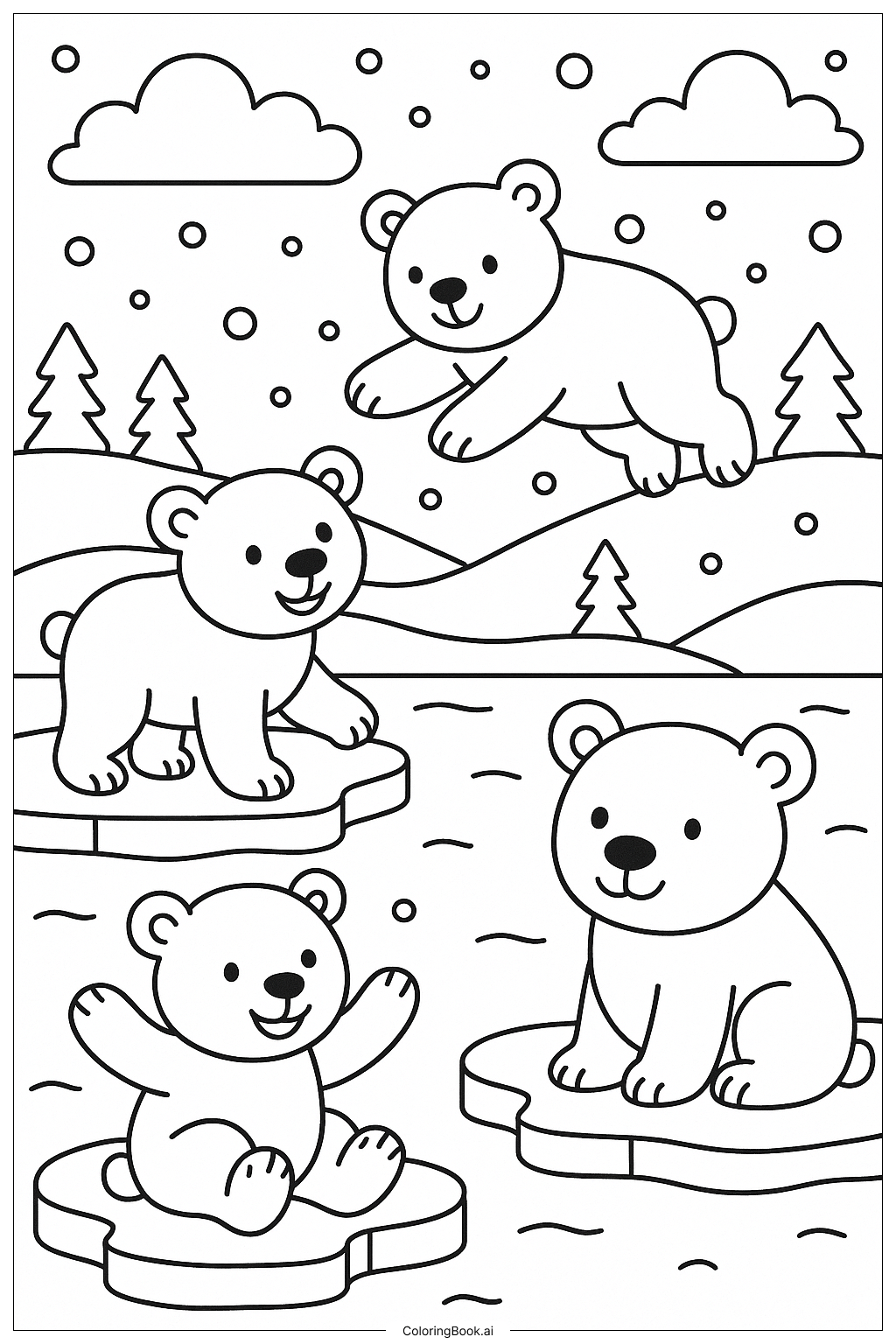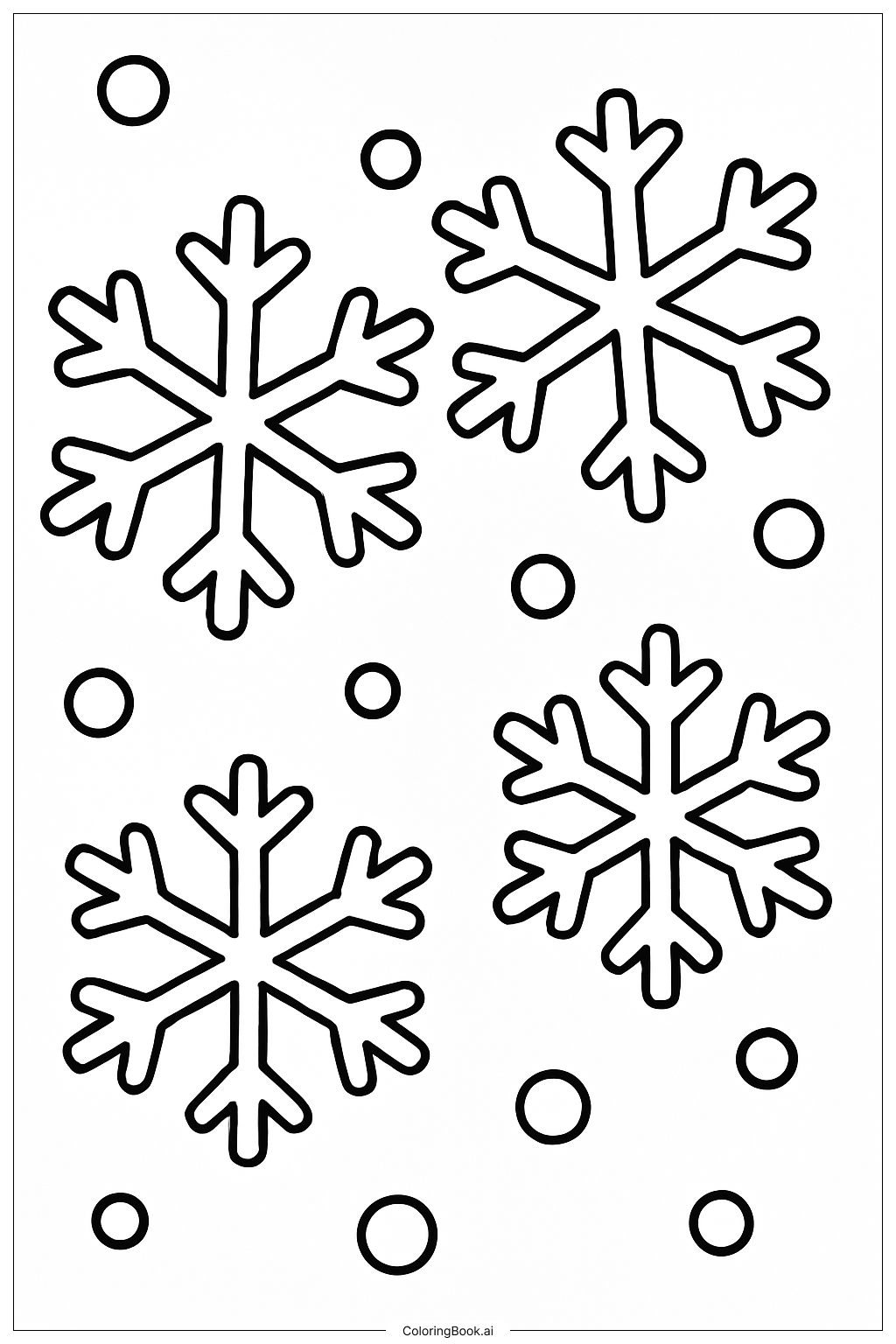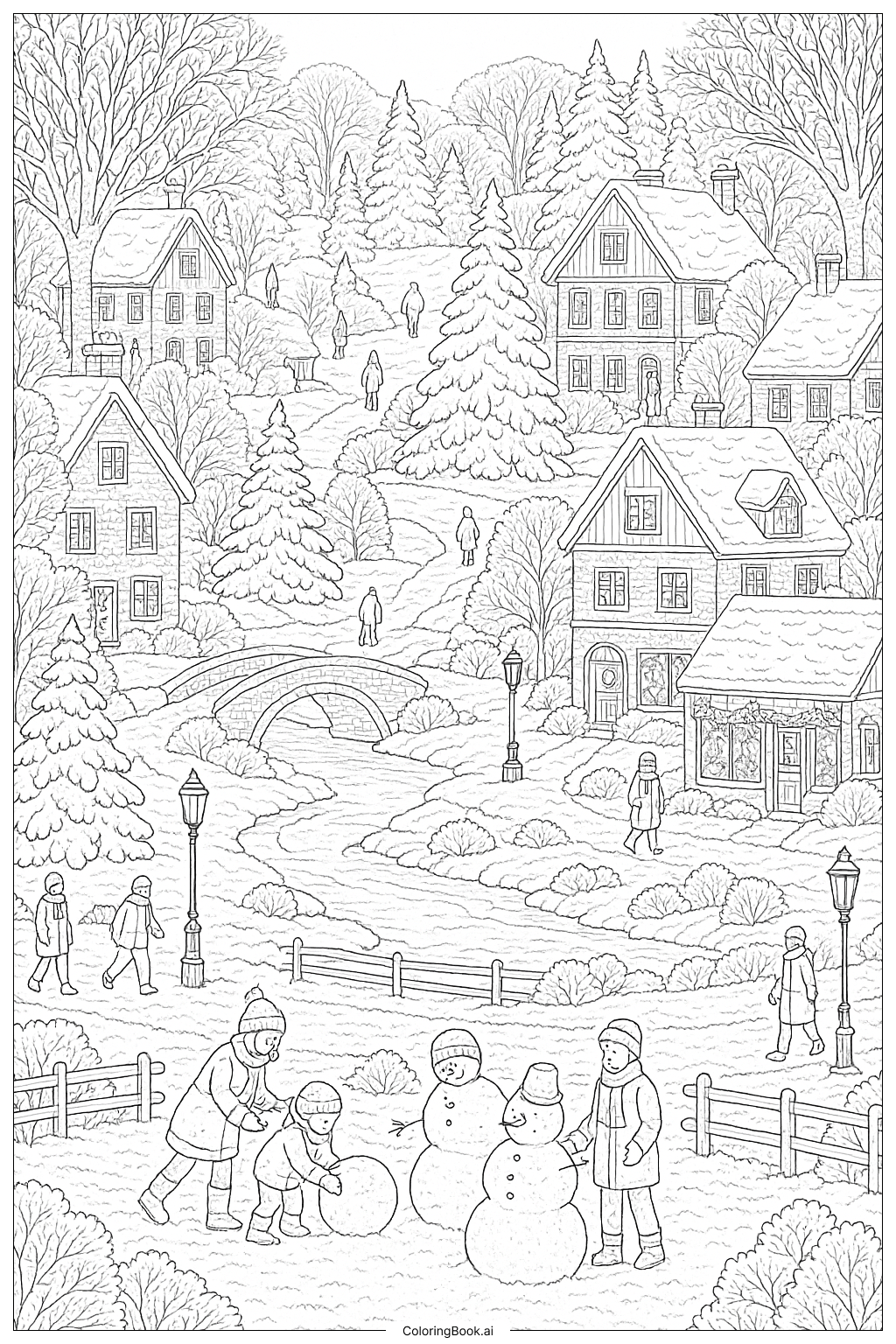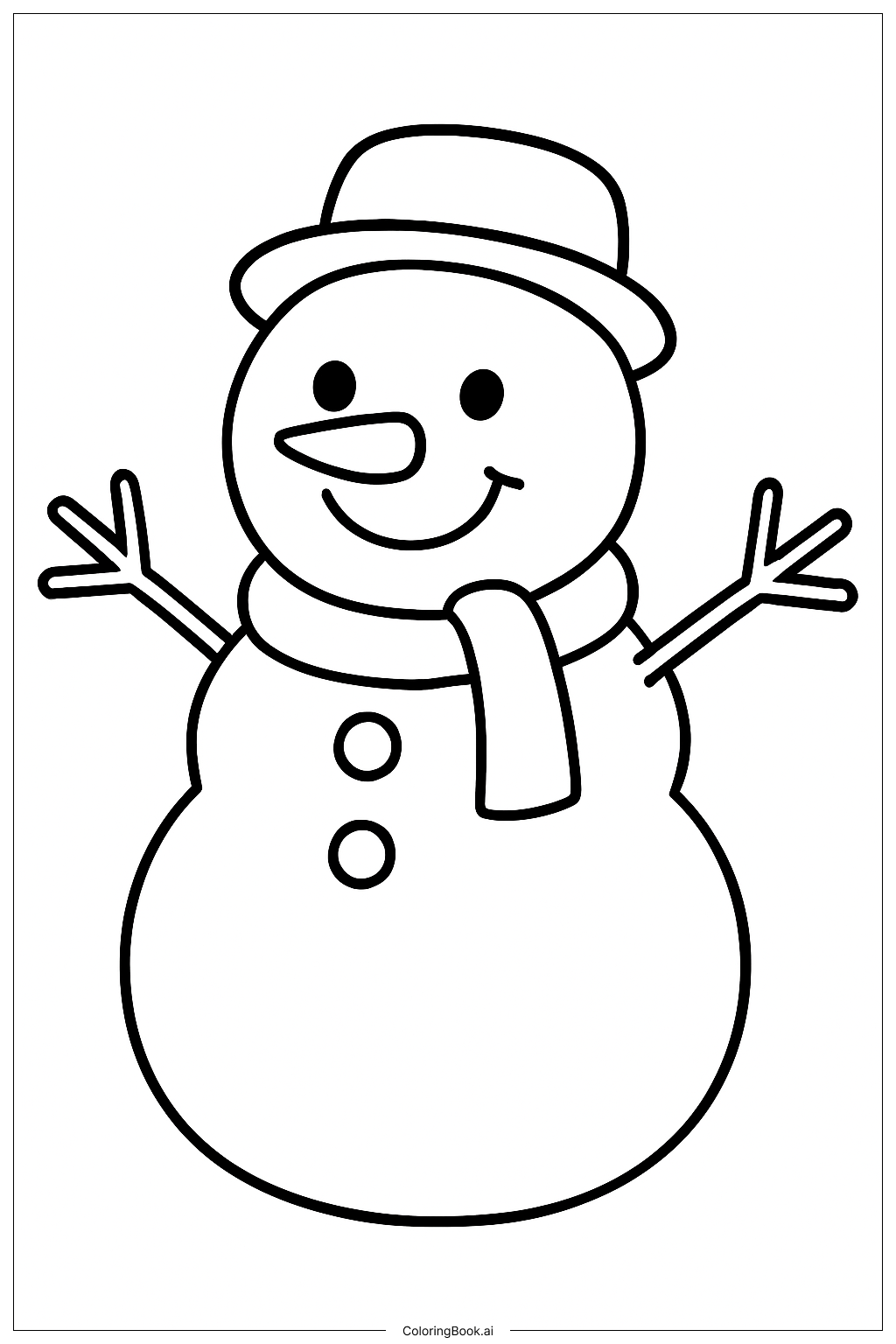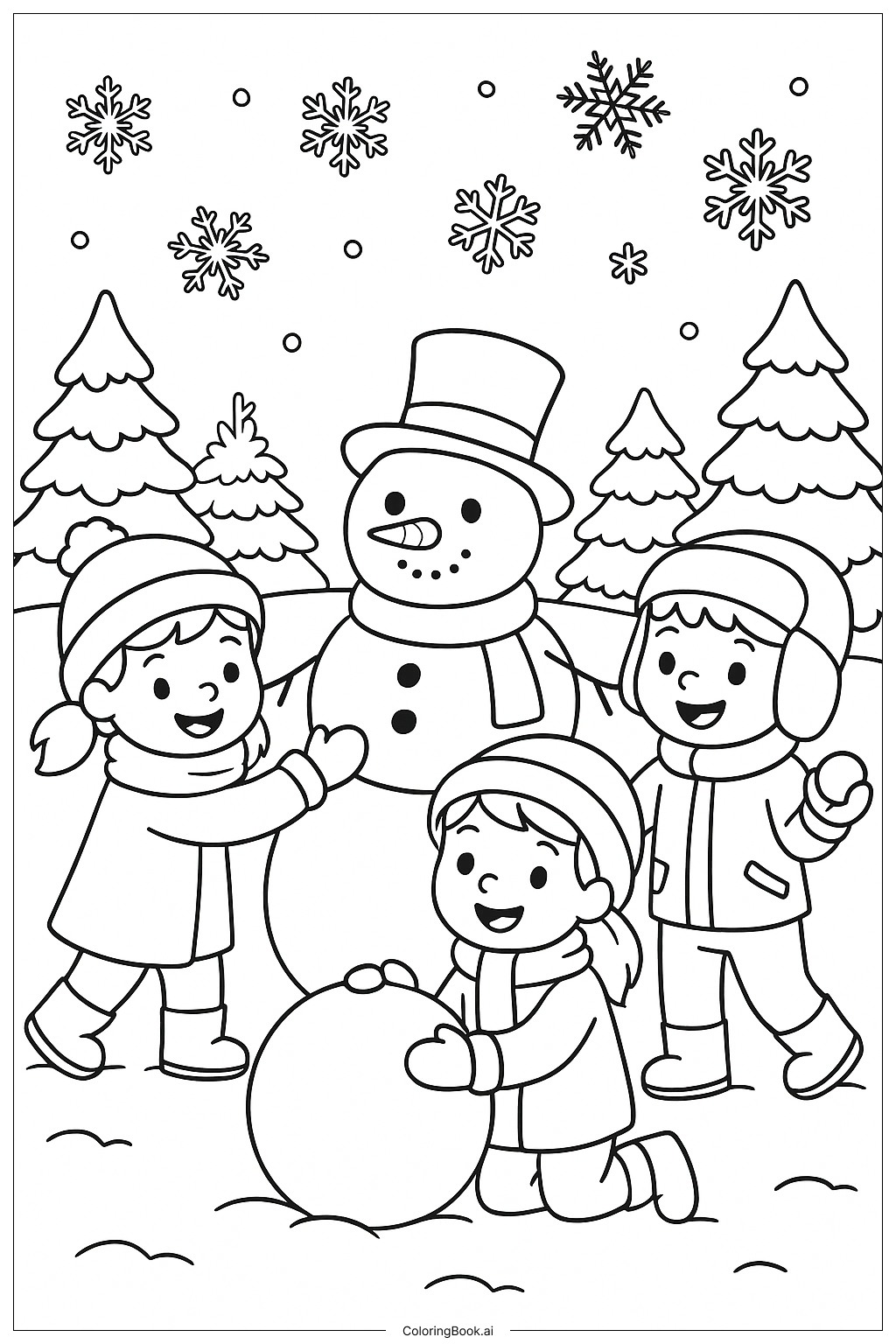Coloring tips: How to color Polar Bears' Arctic Winter coloring page well?
Use soft white or light gray shades for the polar bears’ bodies to show their fur. Color the noses and eyes black for contrast. Use light blue and white for the ice floes and water to show coldness. The snowy hills can be colored in soft blues and whites, and the pine trees can be dark green to stand out nicely. The sky can be a pale blue or gray with white clouds and snowflakes. Try blending colors lightly to keep the winter feel.
Coloring challenges: Which parts are difficult to color and need attention for Polar Bears' Arctic Winter coloring page?
1. Coloring the polar bears can be tricky because they are usually white or light-colored. You need to use light shades to show their shape without making them look empty.
2. The snowflakes and small circles need careful coloring to not lose the delicate look of falling snow.
3. Coloring the ice and water with different blues without mixing them too much can be challenging.
4. The background has many small trees and hills, needing attention to keep the scene balanced.
5. It’s important to keep the colors soft and gentle to keep the peaceful winter atmosphere.
Benefits of coloring books: Advantages of drawing Polar Bears' Arctic Winter coloring page
Coloring this picture helps children learn about Arctic animals and winter scenes. It encourages creativity through choosing colors for snow, ice, and bears. Coloring fine details like snowflakes and trees improves hand-eye coordination and focus. It also provides a calm and relaxing activity, helping kids enjoy the quiet beauty of winter while expressing themselves through art.
